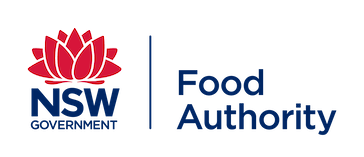Seafood processing businesses
Seafood processing is all activities, procedures and hygiene controls used in the sale of fresh or ready-to-eat (RTE) seafood products (being aquatic vertebrates such as fish or aquatic invertebrates such as Crustaceans or their products) for human consumption.
This includes:
- receipt
- processing, including skinning, gilling and gutting, filleting, shucking, cooking, smoking, preserving or canning
- storing
- dispatching
- transporting, except from retail premises to the consumer, or in a vehicle from which the seafood will be sold by retail.
It does not include the handling of live lobsters, crayfish, abalone, crabs or sea urchins, or the retail sale of seafood.
Seafood does not include amphibians, mammals, reptiles or aquatic plants.
Shellfish harvesters and processors see instead the shellfish industry page.
Licensing & registration
Seafood processing businesses need to:
- apply for a Food Authority licence online or download an application form (PDF, 550.65 KB), print and post it
- meet relevant food standards
- prepare for regular audits
- if exporting: contact the Australian Department of Agriculture and Water Resources for an export certification or permit.
For more see applying for a food licence.
Skills & knowledge
There are no formal food safety qualifications required for seafood processing businesses, however each food handler and person in control of a food business is required to have food safety skills and knowledge appropriate to their food handling activities.
For a guide, see FSANZ Safe Food Australia Division 2.
Requirements are set out in the Food Standards Code, Standard 3.2.2 - Food Safety Practices and General Requirements, clause 3.
Construction & facilities
Construction and layout of a food premise must be designed to minimise the opportunity for food contamination.
Premises must ensure that their fixtures, fittings, equipment and transport vehicles are designed and constructed in a manner that means they can be easily cleaned and, where necessary, sanitised.
Businesses must also ensure that the premises are provided with the necessary services of water, waste disposal, light, ventilation, cleaning and personal hygiene facilities, storage space and access to toilets.
For a guide see FSANZ Safe Food Australia.
Requirements are set out in the Food Standards Code, Chapter 3, Standard 3.2.3 - Food Premises and Equipment.
Hygiene & handling
A food handler must take all reasonable measures not to handle food or surfaces likely to come into contact with food in a way that is likely to compromise the safety and suitability of food.
Seafood processors must exercise personal hygiene and health practices so the food is suitable for sale by:
- wearing clean clothing at the start of each day
- not handling food if they know, or suspect, they have an illness, for example vomiting or diarrhoea
- covering open wounds with waterproof bandage
- washing hands whenever it is likely their hands could contaminate food, for example after visiting the toilet, after meal breaks
- not smoking around product at any time.
For more see our factsheets:
See also FSANZ guide Safe Food Australia.
Requirements are set out in Food Standards Code:
Food safety controls
Seafood processing businesses need to develop and implement a documented food safety program to ensure that all potential food safety hazards are identified and controlled..
The NSW Food Authority has developed a program template to assist seafood businesses. Please note, that this template needs to be adapted to fit the activities and hazards in each business.
For more see food safety programs.
See also FSANZ guide to Standard 3.2.1.
The requirements are set out in Food Standards Code Standard 3.2.1 Food Safety Programs.
Labelling
Requirements for product labelling apply.
For an introduction and Food Authority factsheets see our labelling pages and FSANZ labelling user guides.
Requirements are set out in Food Standards Code, Chapter 1, Part 1.2 - Labelling and other Information Requirements.
Testing
Licensed seafood processing businesses need to comply with the requirements set out in the NSW Food Safety Schemes Manual.
The Manual specifies microbiological testing requirements, including acceptable levels and testing frequency. The manual requires that:
- all seafood processors are to test non-reticulated water used for E.coli
- for processors of RTE seafood test opened and packaged oysters for E.Coli
- processors of RTE seafood and cooked/smoked seafood test for Listeria monocytongenes.
Further information to note:
- any analysis is at the licence holder’s expense and must be conducted by a National Association of Testing Authorities (NATA) or Food Authority approved laboratory
- the licence holder needs to notify the Food Authority if an analysed sample fails to meet the standards as detailed in the Manual or those set by the Food Authority
- this notification to the Food Authority is to be made:
- verbally within 24 hours of becoming aware of the sample failure, and
- in writing within 7 days of becoming aware of the sample failure.
Inspections & audits
On a scheduled basis, seafood processing businesses will be audited by the Food Authority for compliance with requirements.
Compliance or regulatory action will be taken if required.
There are fees for inspections, payable by the licence holder.
For more see audits of licensed businesses.
Legislation & standards
Seafood processing requirements are set out in:
- Food Act 2003 (NSW)
- Food Regulation 2015, including relevant parts of the Seafood Food Safety Scheme
- Food Standards Code, including -
- NSW Food Safety Schemes Manual
- if exporting: Department of Agriculture export certification or permit.
